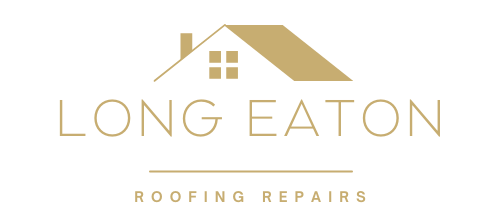Chimney flashing plays a critical role in keeping your roof watertight. Positioned where the chimney meets the roof, flashing acts as a protective barrier that prevents rainwater from seeping into your property. When flashing begins to fail, water intrusion can lead to costly internal damage, damp, and even structural decay. At Long Eaton Roofing Repairs, we help property owners across Long Eaton, Nottingham identify and resolve chimney flashing issues before they develop into major problems.
What Is Chimney Flashing?
Flashing is the metalwork installed around the base of a chimney stack to seal the junction between the roof and the brickwork. Lead is commonly used due to its durability and flexibility, but alternative materials such as aluminium and zinc are sometimes found.
The flashing is typically installed in two parts:
- Step flashing, which is layered into the roof tiles or slates
- Counter flashing, which is embedded into the brick mortar joints above the step flashing
Together, they create a sealed system that diverts rainwater away from the vulnerable joint between chimney and roof.
Common Signs of Flashing Failure
Because flashing is exposed to constant weathering and movement, it can deteriorate over time. Knowing what to look for can help you catch problems early.
Visual and structural indicators:
- Visible gaps or lifting in the metalwork around the chimney
- Cracked or crumbling mortar joints near the flashing
- Rust or corrosion on metal flashing components
- Water stains or damp patches on the ceiling or chimney breast
- Loose or missing roof tiles surrounding the chimney
- Debris in gutters that includes flakes of lead or flashing material
Even small separations or splits can allow water to penetrate the roof, leading to damage far beyond the immediate area.
Checking for Interior Signs of Trouble
Not all flashing issues are visible from the outside. In many cases, internal signs may appear before an external problem is spotted.
Things to look for indoors:
- Peeling wallpaper or bubbling paint near the chimney breast
- Discoloured ceiling patches in upper rooms or lofts
- Musty odours in areas close to the chimney
- Signs of mould growth on walls or insulation
These symptoms can point to ongoing water ingress, which often stems from defective flashing or sealing failure.
What Causes Flashing to Fail?
Flashing can fail for several reasons, particularly as it ages or if it was installed poorly to begin with.
Typical causes include:
- Thermal expansion and contraction, causing the metal to pull away from the brickwork
- Degraded mortar around the chimney, affecting the hold of the counter flashing
- Improper installation, such as insufficient overlap or incorrectly cut flashing
- Weather damage, particularly from storms or frost cycles
- Animal interference, such as birds or squirrels disturbing flashing edges
Routine inspections can help spot these issues early, reducing the likelihood of expensive damage to your roof structure or interior.
When to Call a Professional
While it’s possible to spot some signs of flashing failure yourself, many issues are best confirmed by a roofing specialist with experience in safe access and accurate diagnosis.
At Long Eaton Roofing Repairs, we carry out detailed roof inspections across Long Eaton, assessing the condition of chimney flashing, roof tiles, mortar, and all related components. Where problems are found, we offer tailored repair solutions using high-quality materials and proven methods.
Our services include:
- Lead flashing repair or full replacement
- Repointing of chimney stacks and brickwork
- Weatherproof sealing and resealing
- Tile replacement around chimney bases
- Preventative maintenance to stop future leaks
We ensure that all work complies with current building standards and is designed to last.
Conclusion
Chimney flashing may be a small part of your roofing system, but when it fails, the consequences can be significant. Recognising the signs of damage—both inside and out—can help you act quickly and avoid costly repairs. For trusted flashing inspections and repairs in Long Eaton, contact Long Eaton Roofing Repairs. Our experienced team is here to ensure your roof stays watertight and your home protected all year round.
Call us on: 0115 647 1193
Click here to find out more about Long Eaton Roofing Repairs
Click here to complete our contact form and see how we can help with your roofing needs.

